Transition Works 1991-1995 | Family Room | Small Histories | Parallel Journeys | Unto a Land | Other Works
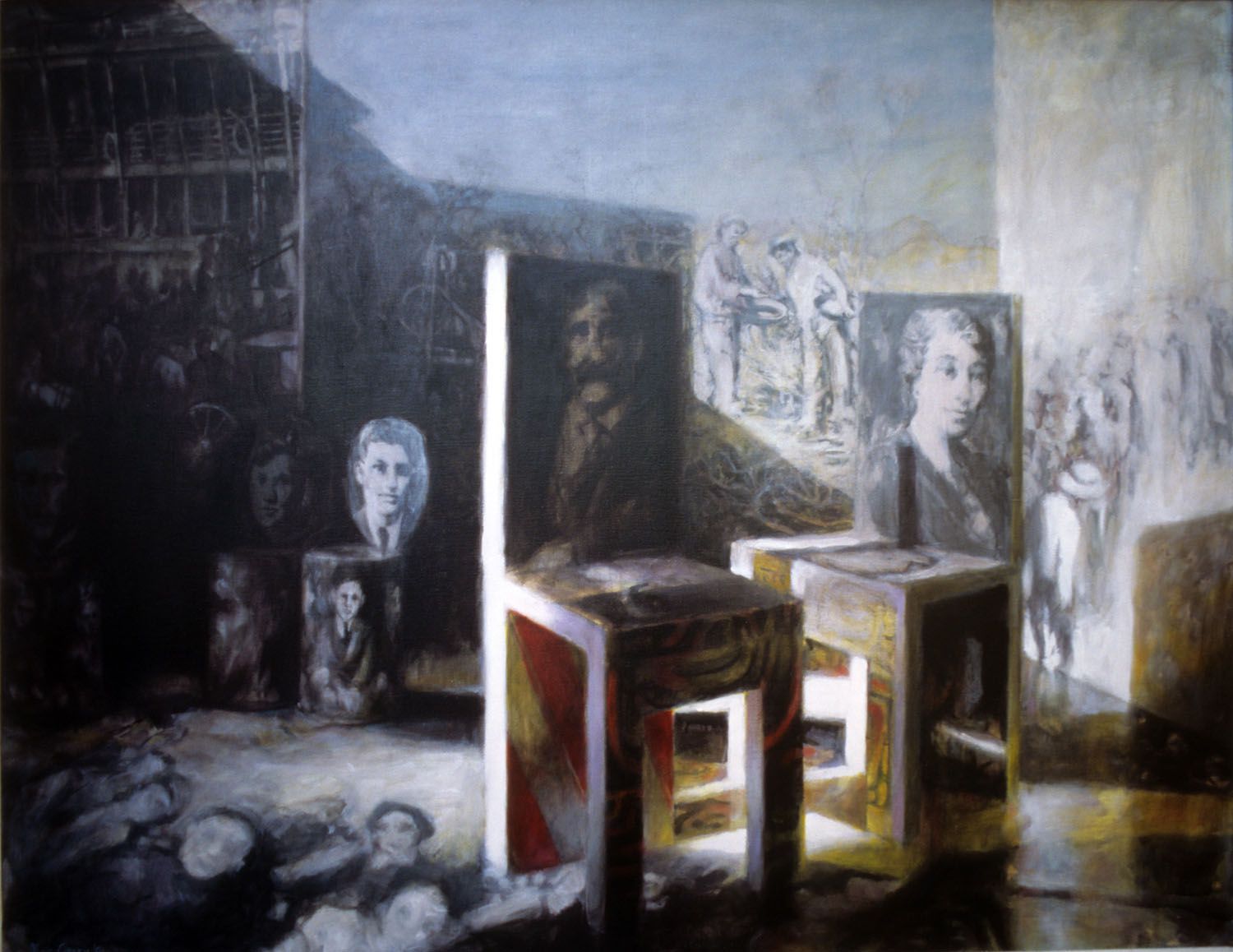
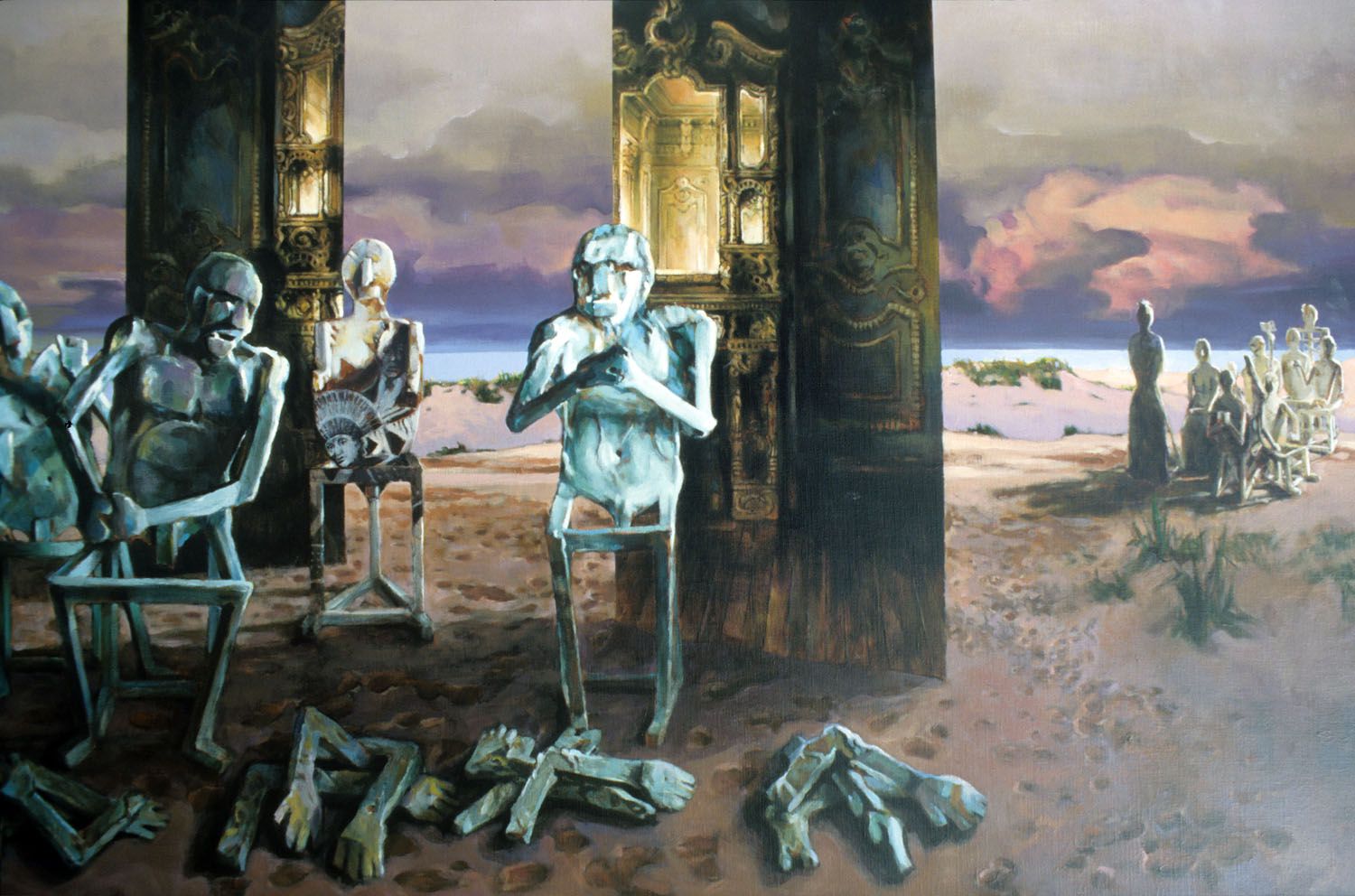
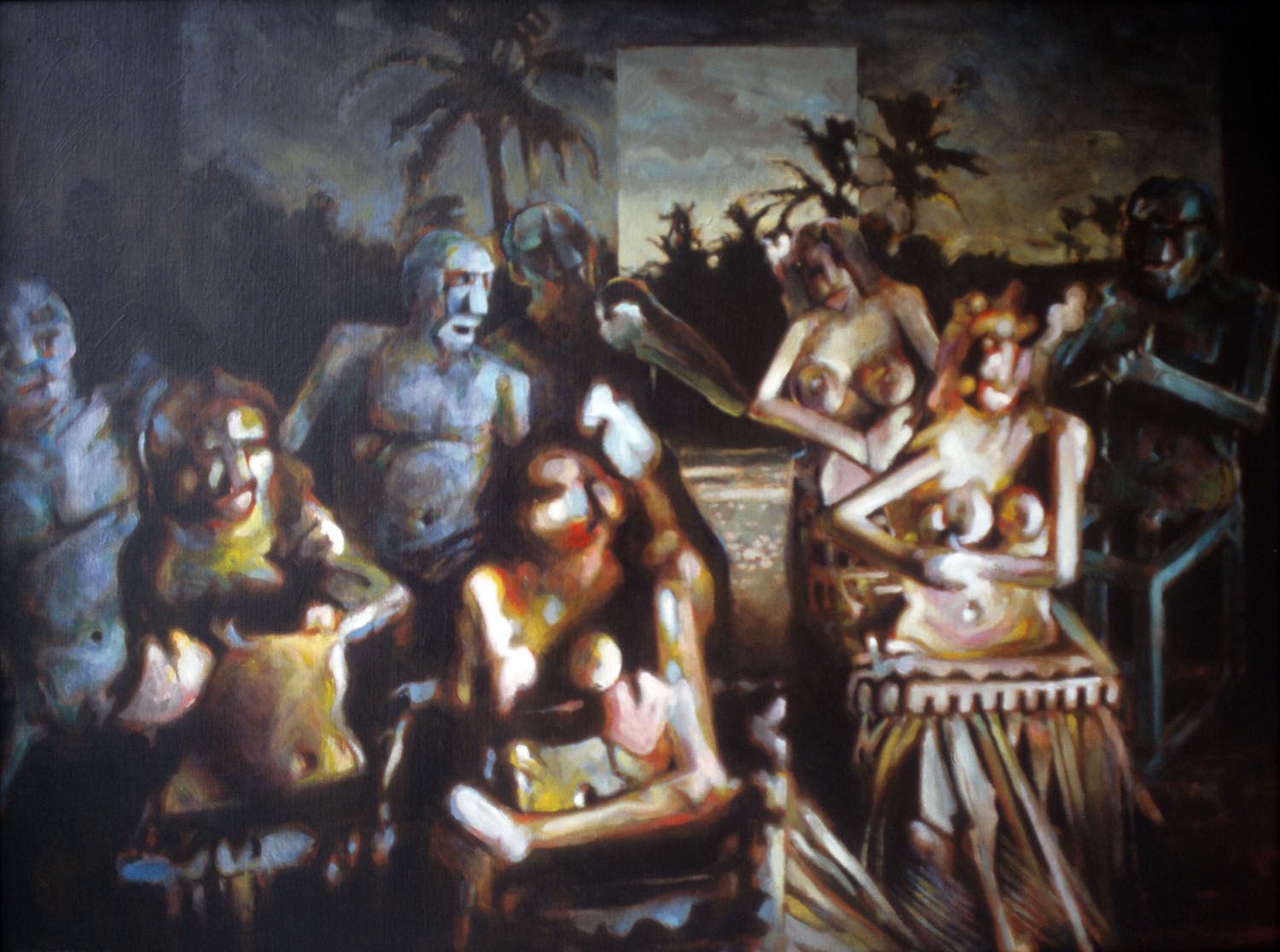
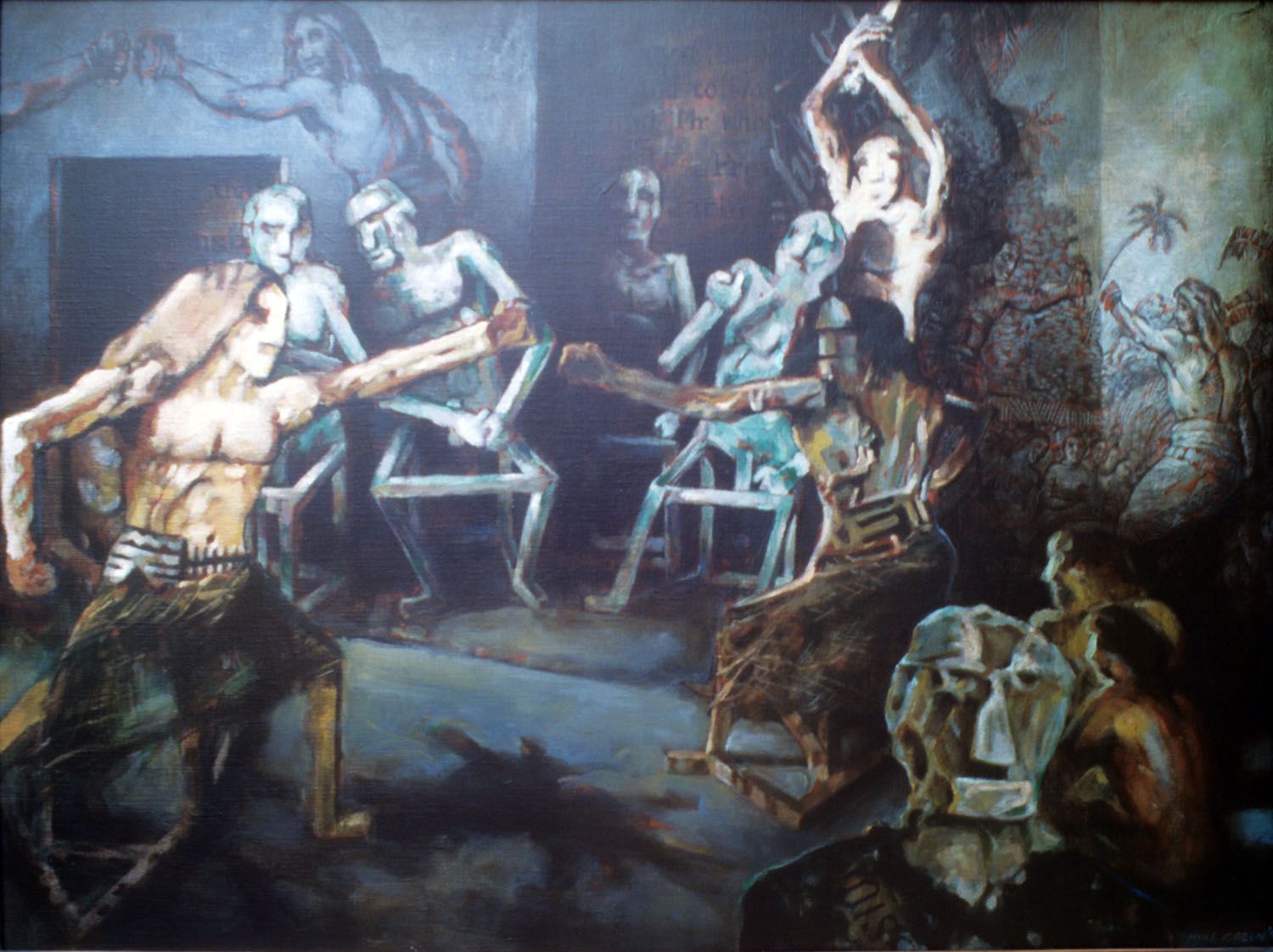
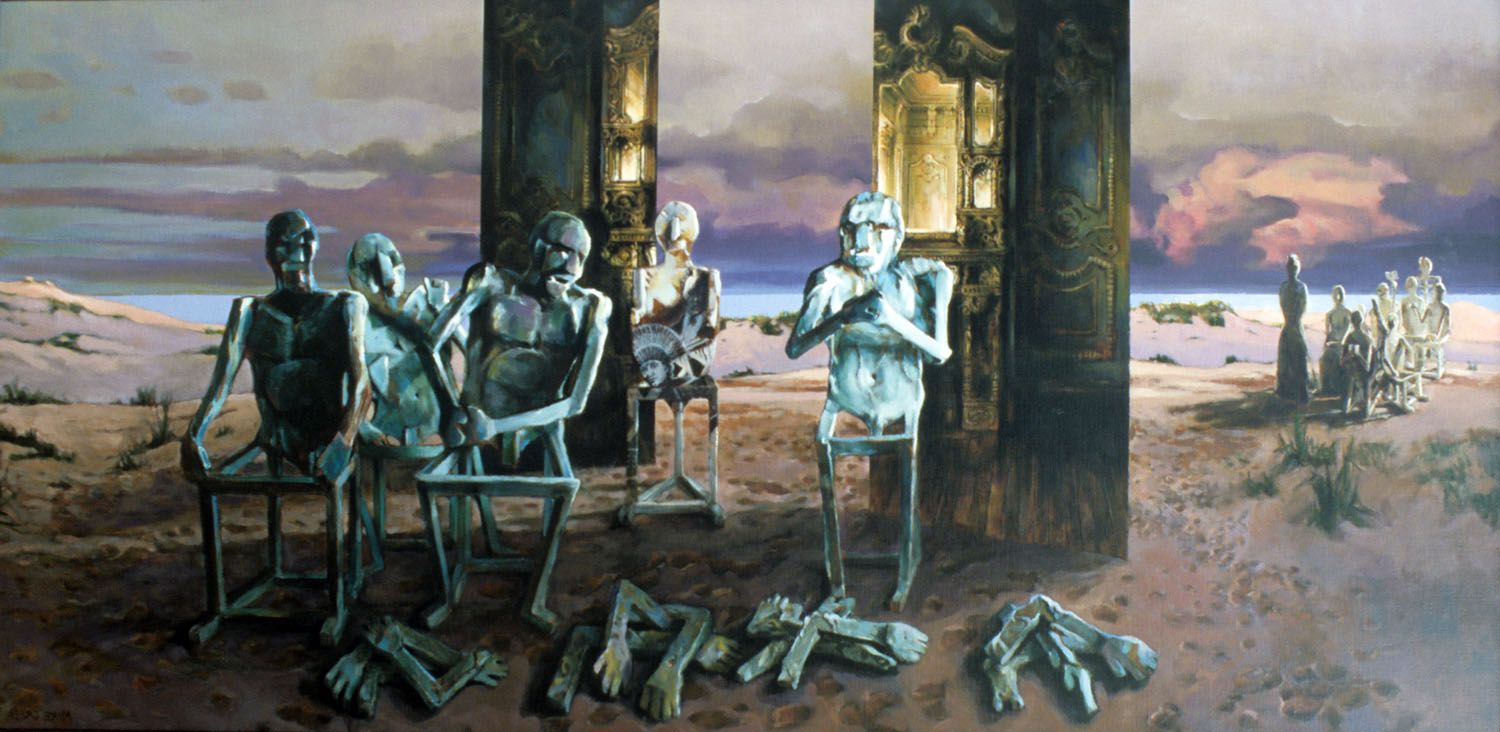

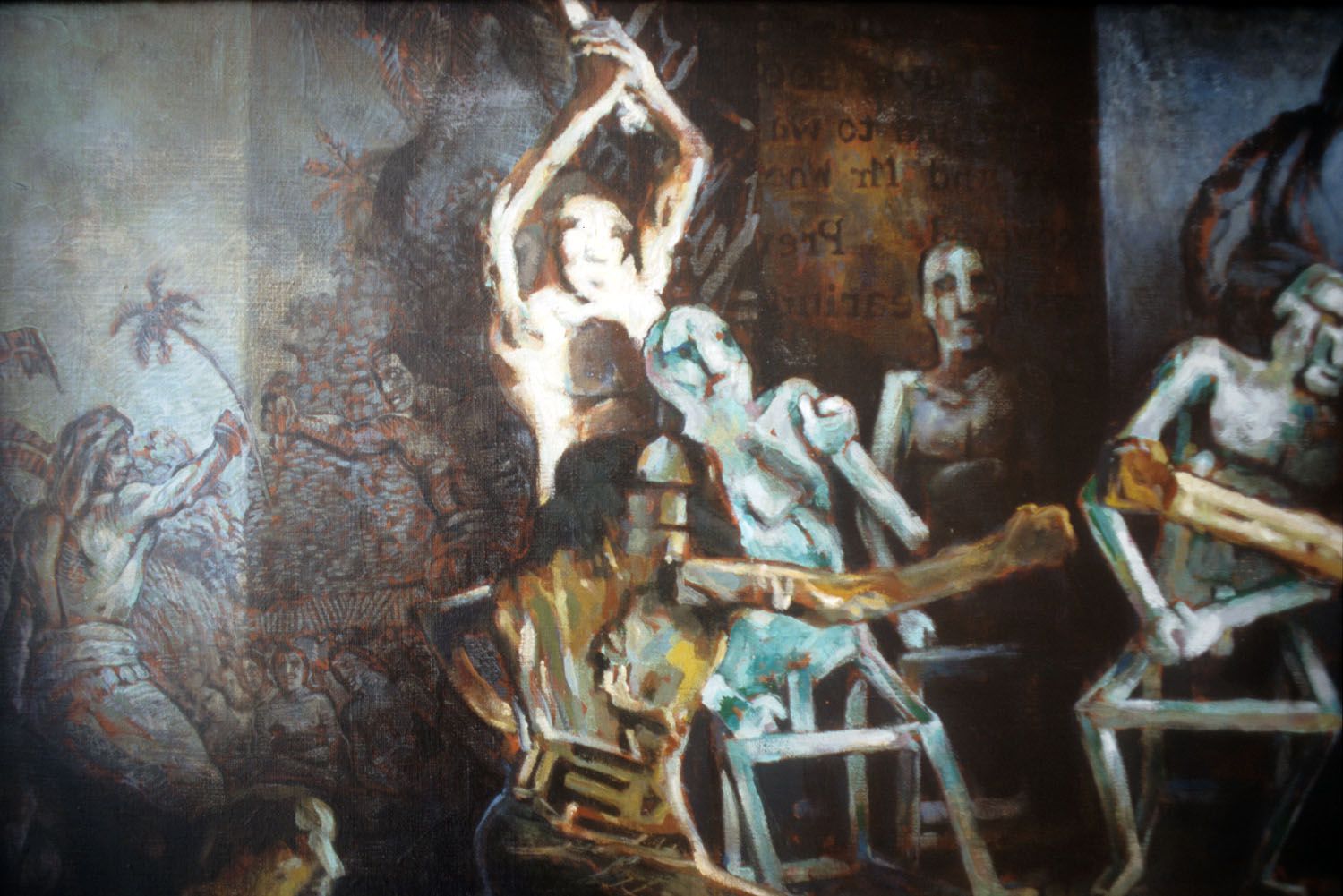
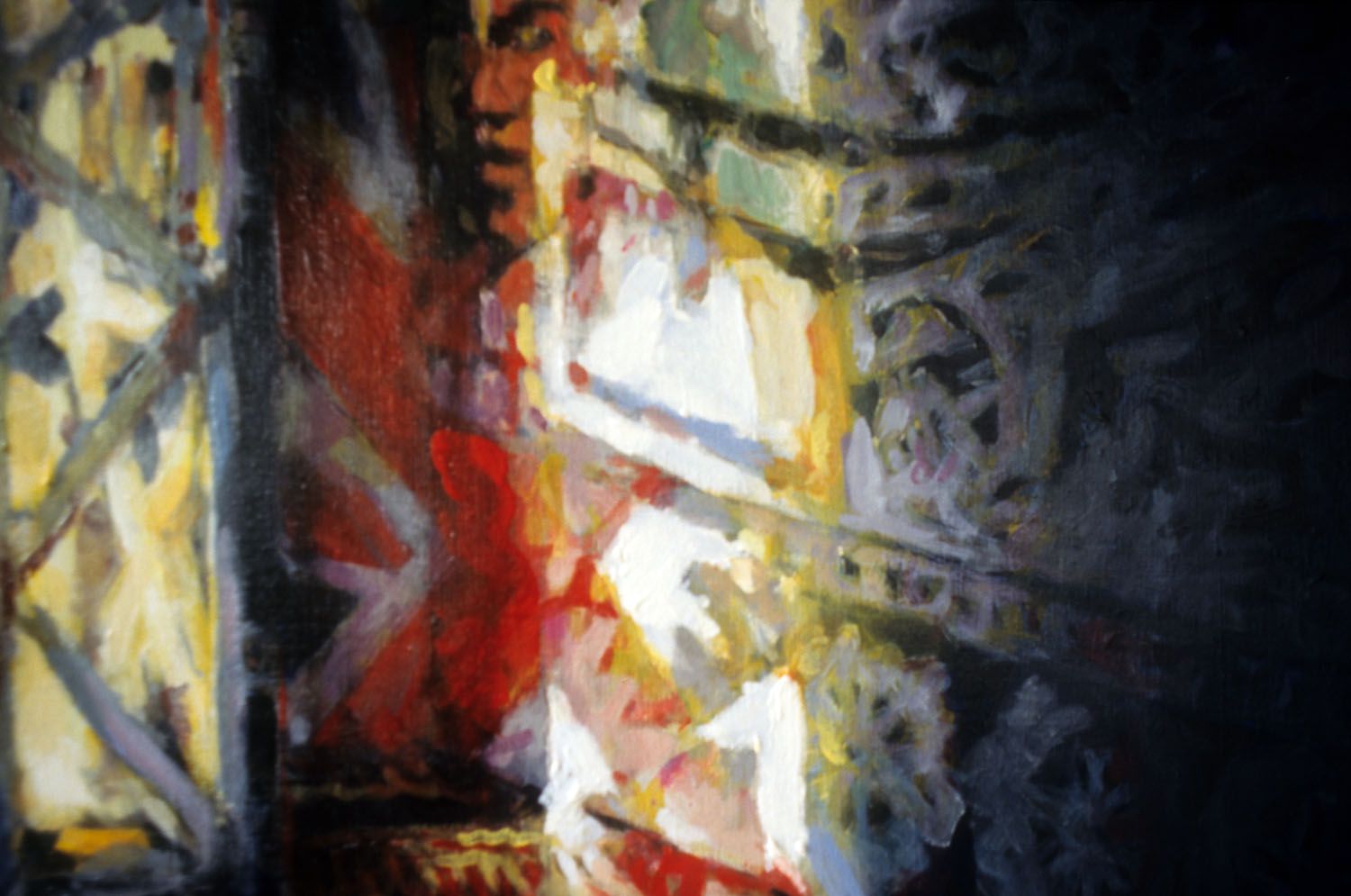
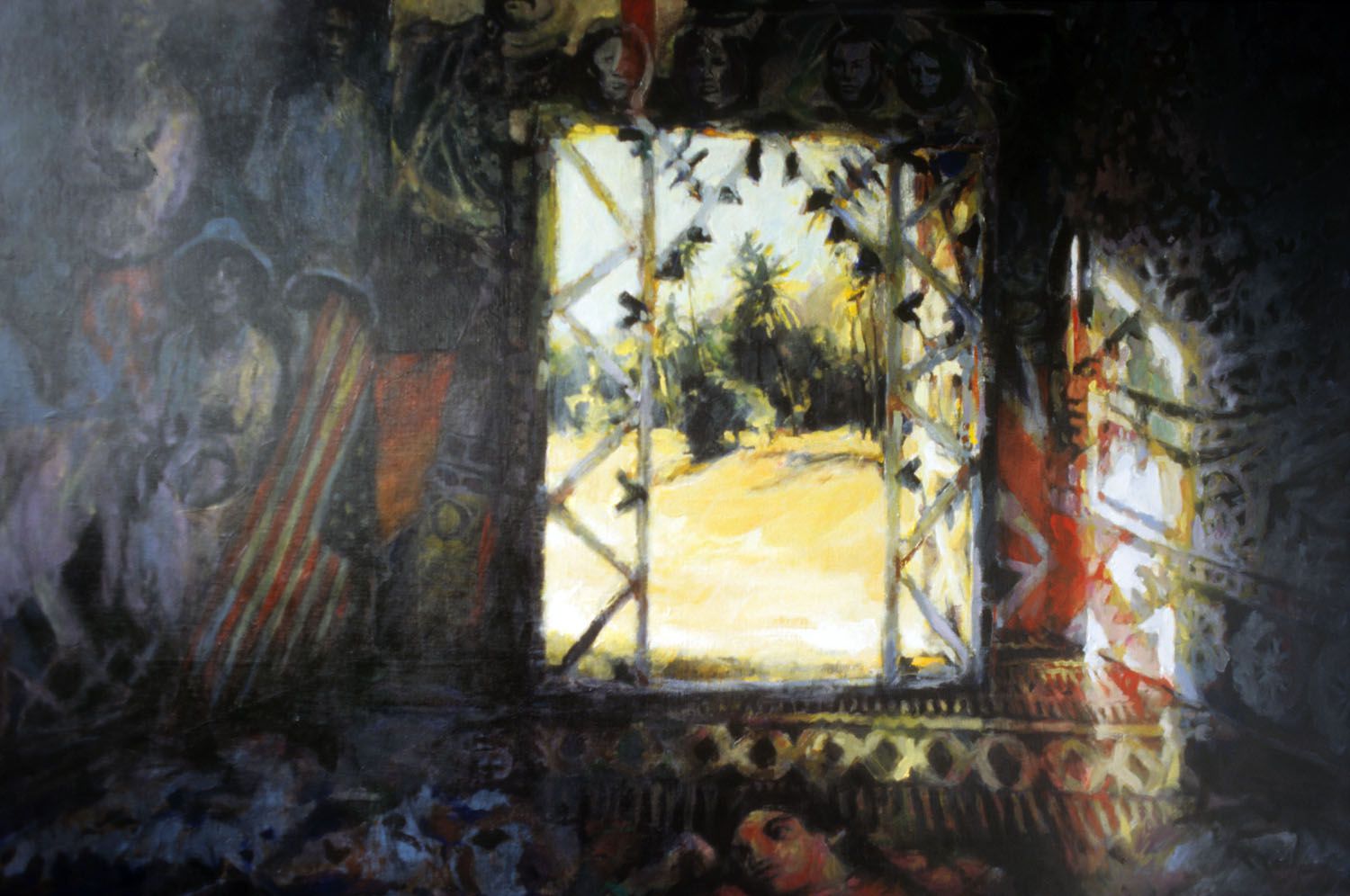

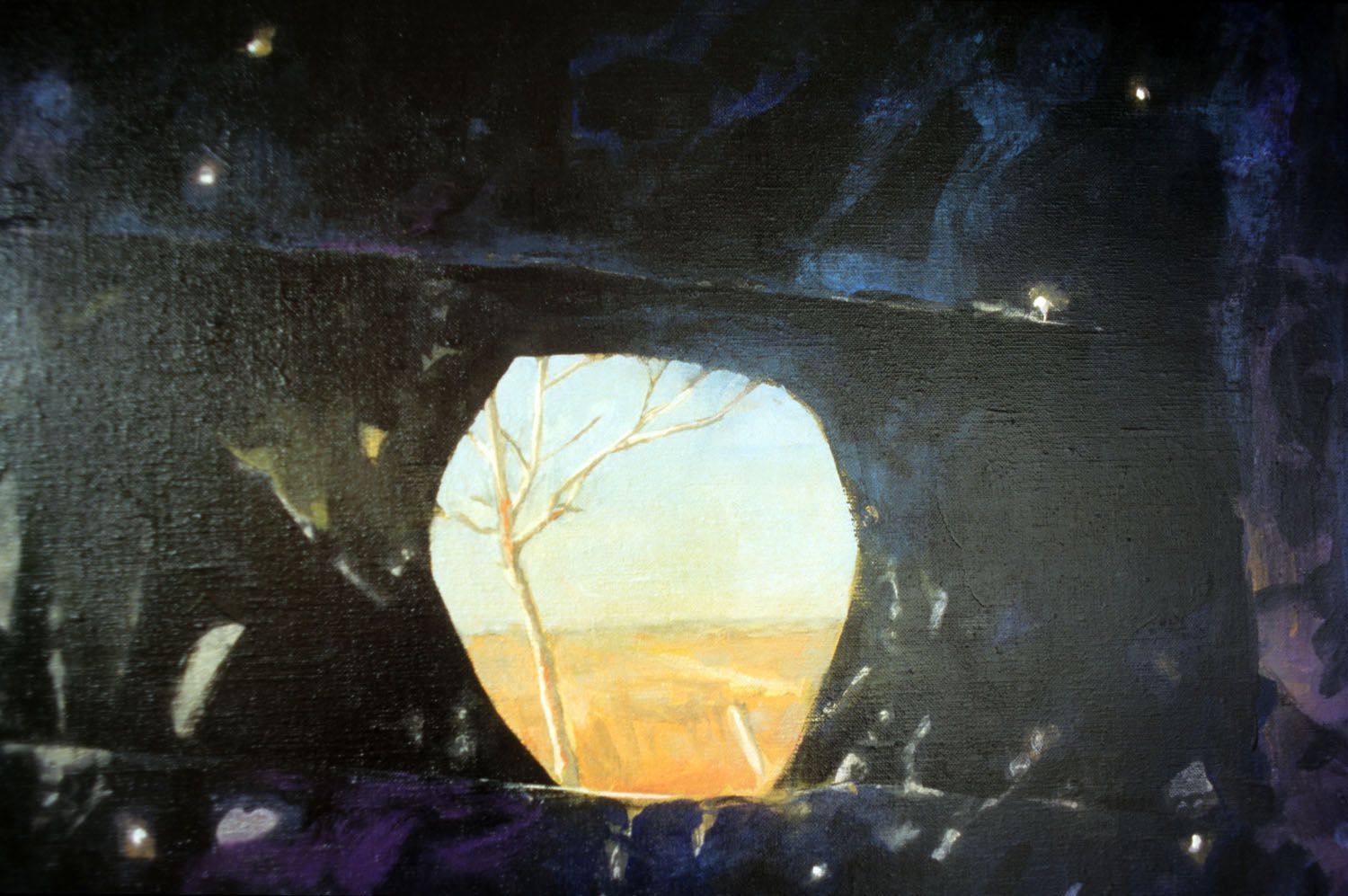
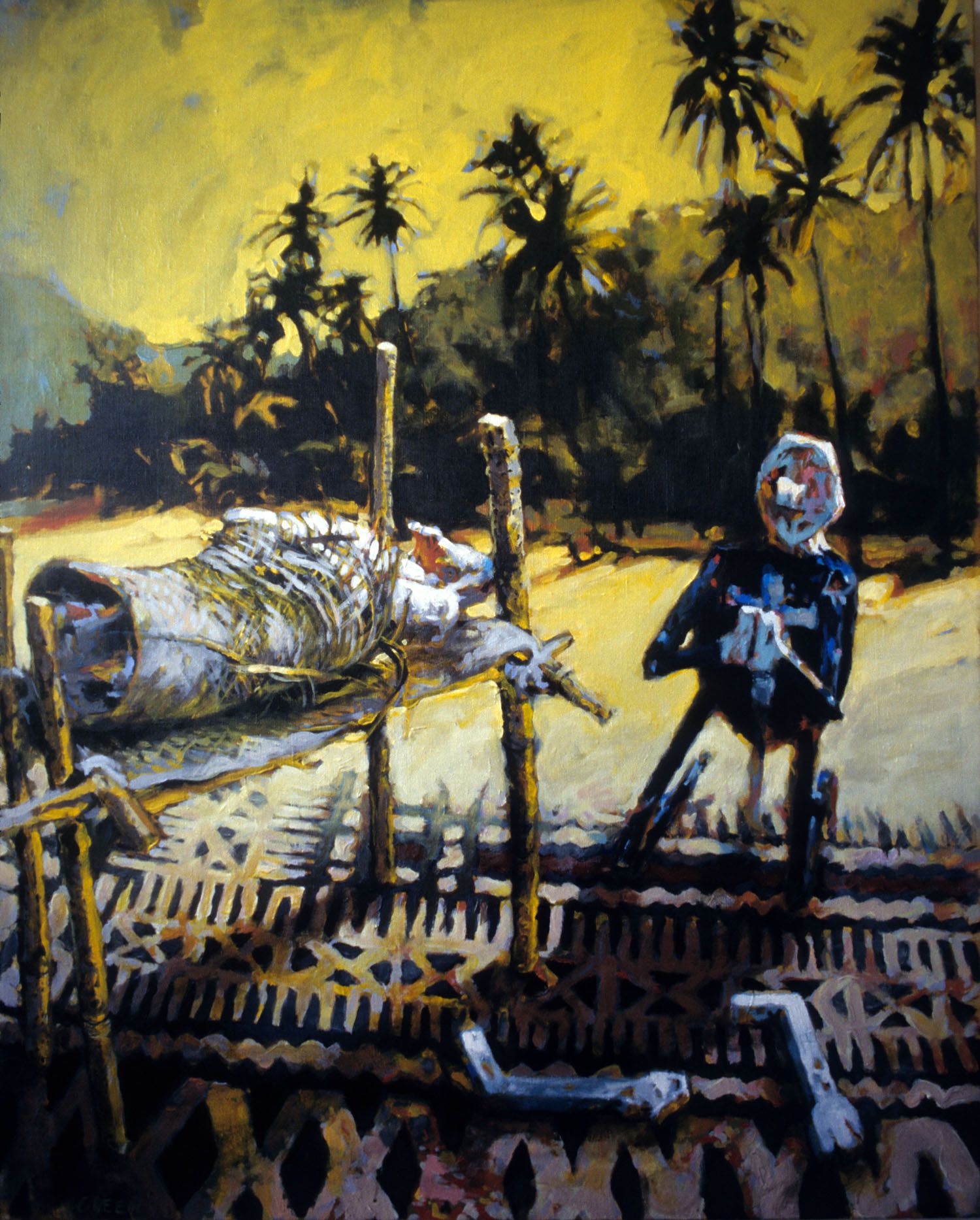
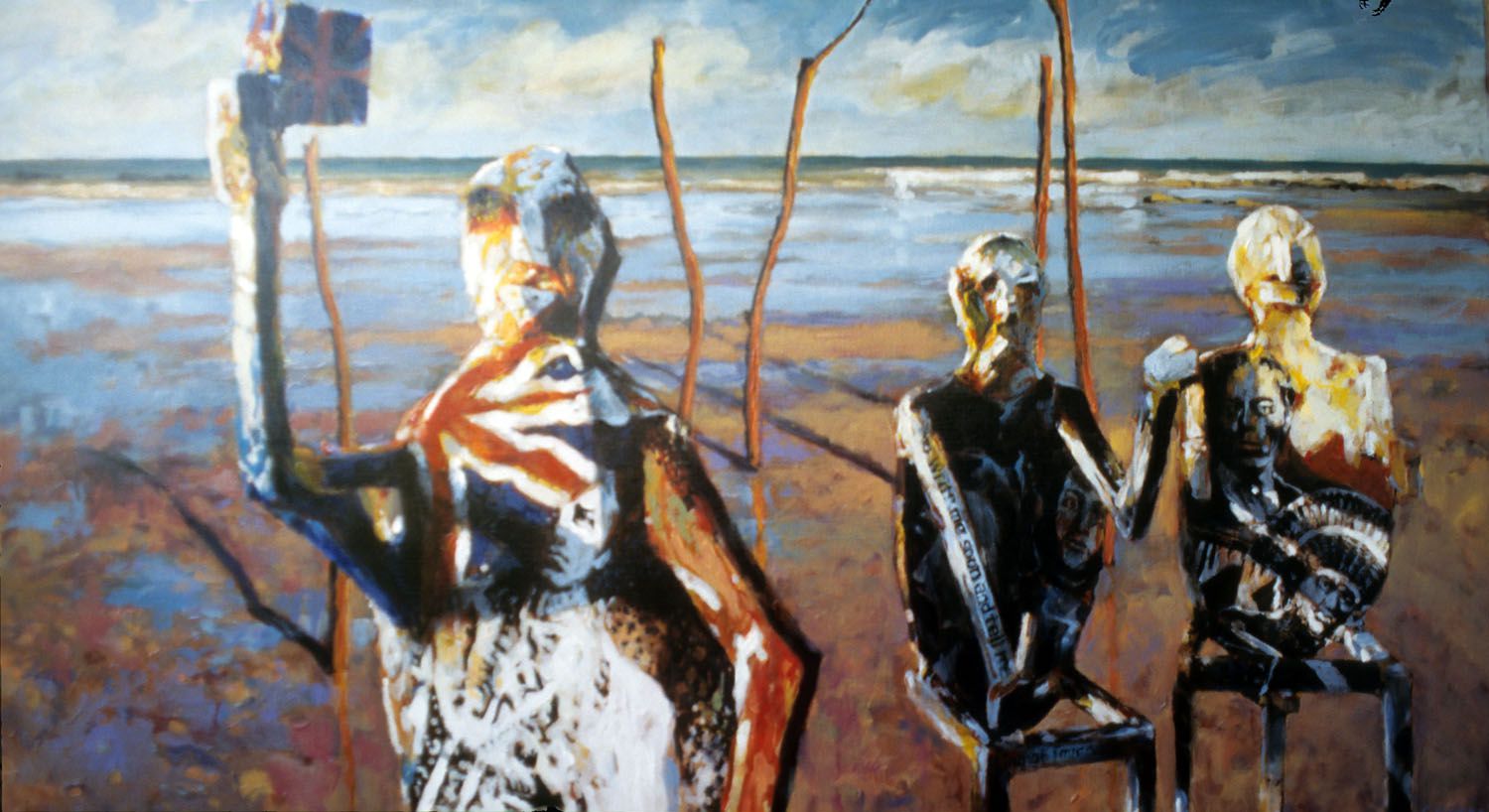

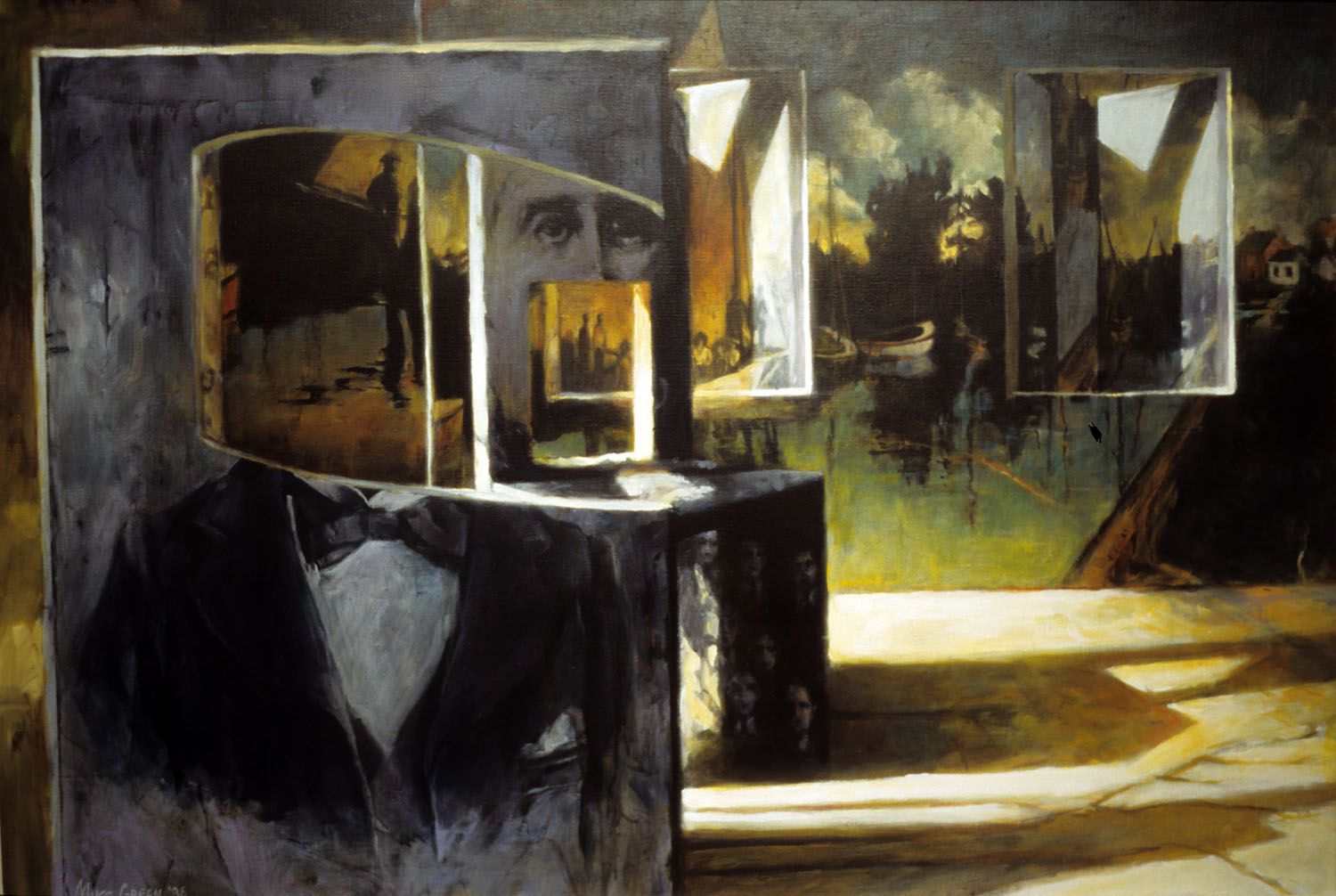
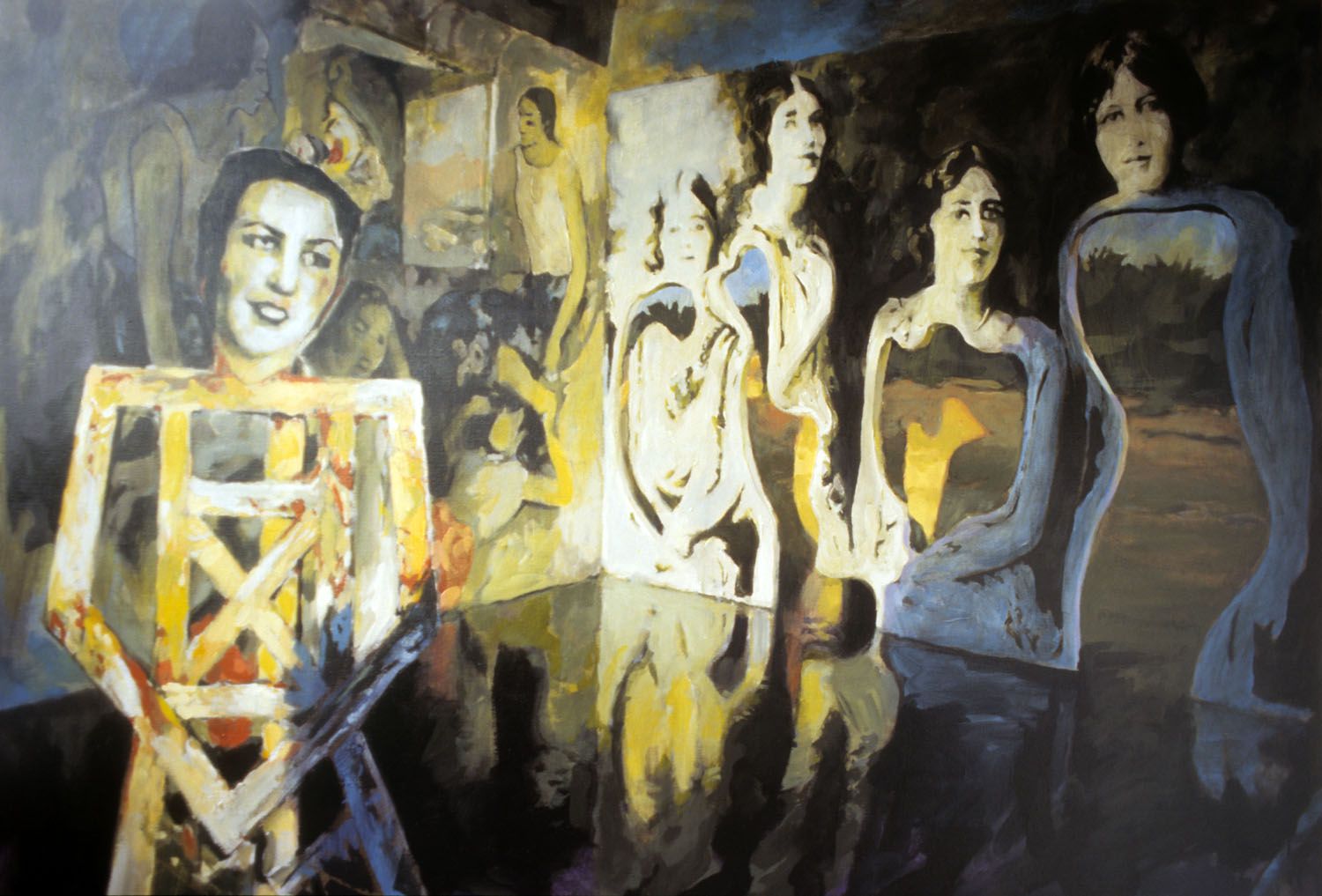
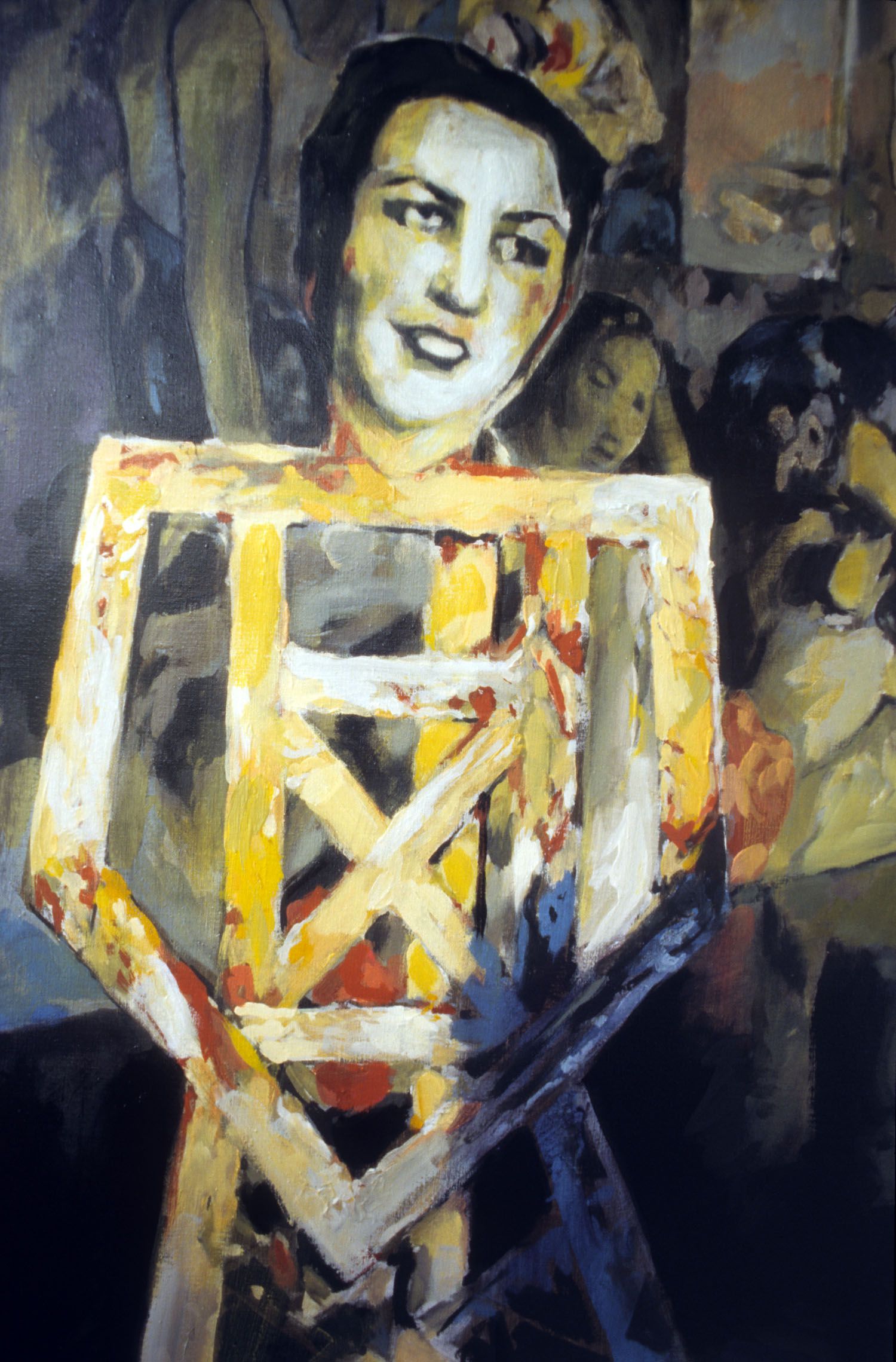
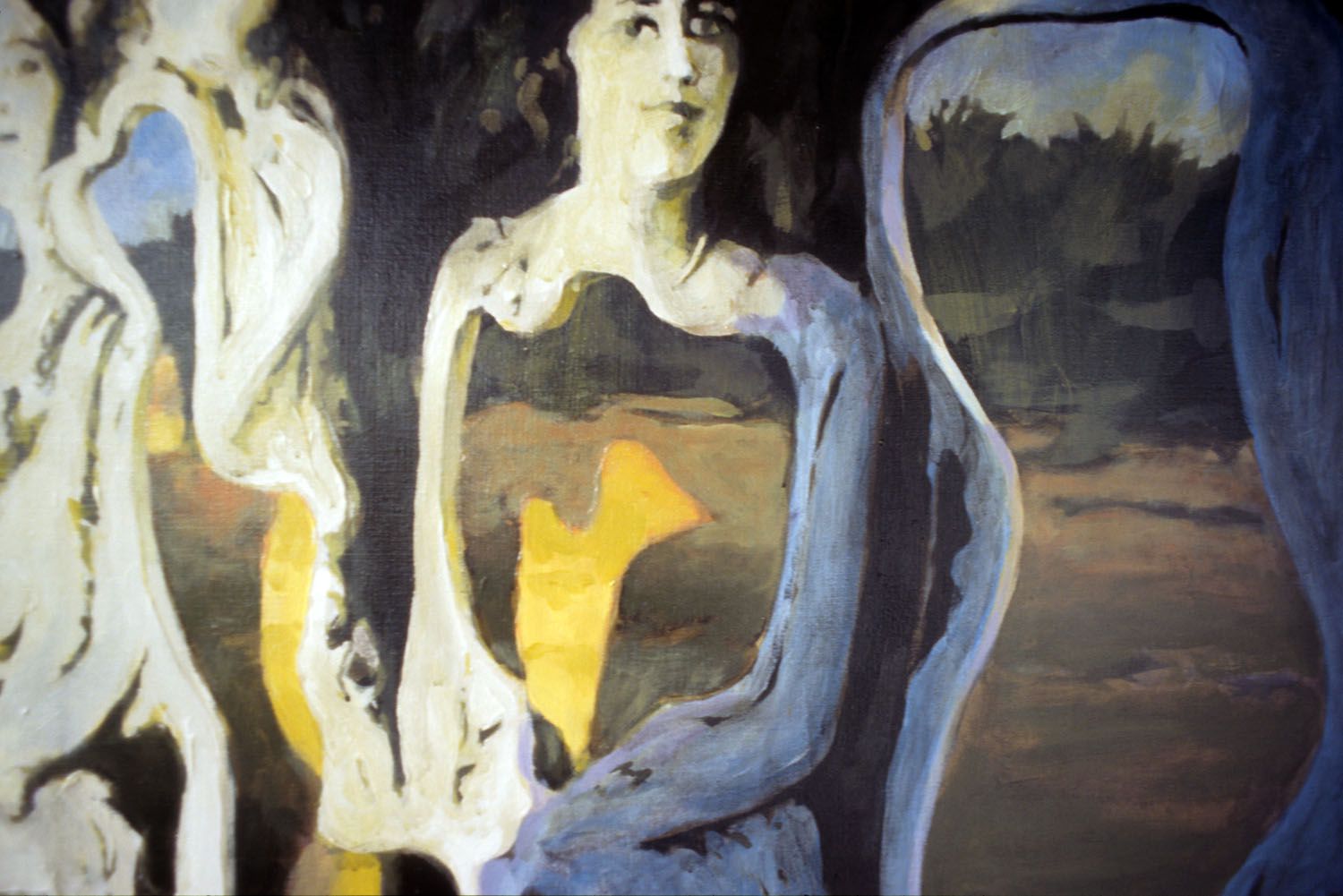
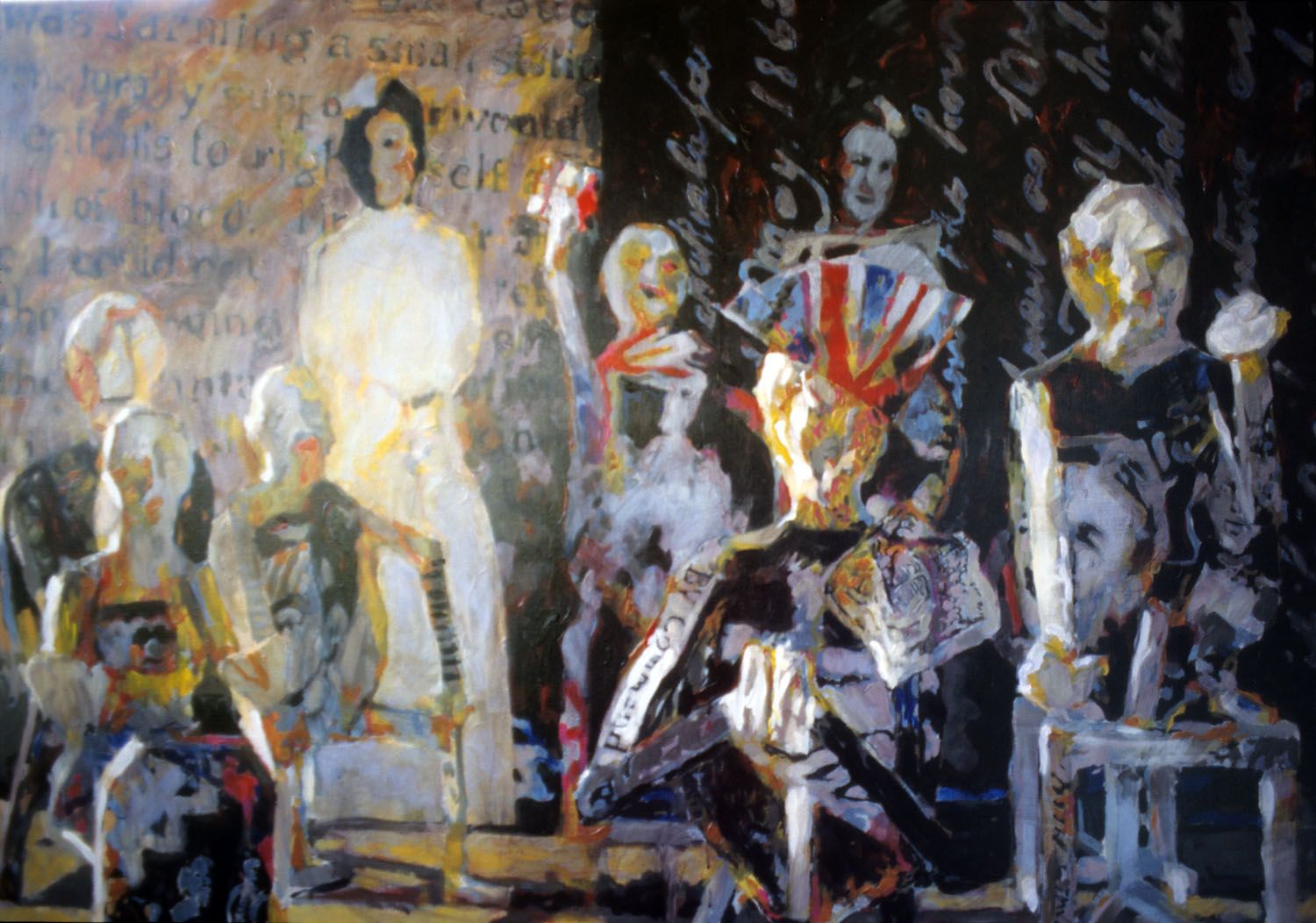

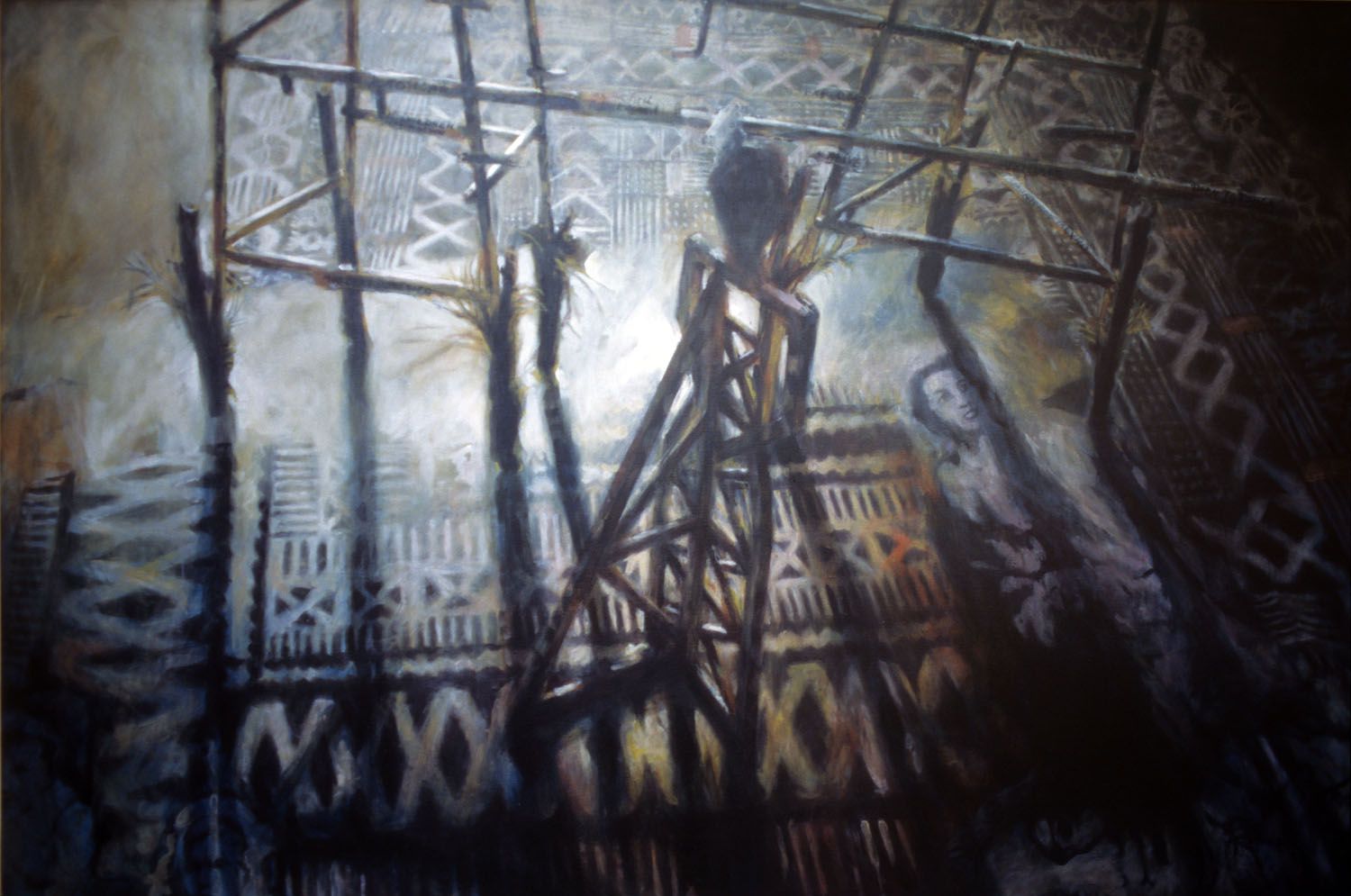
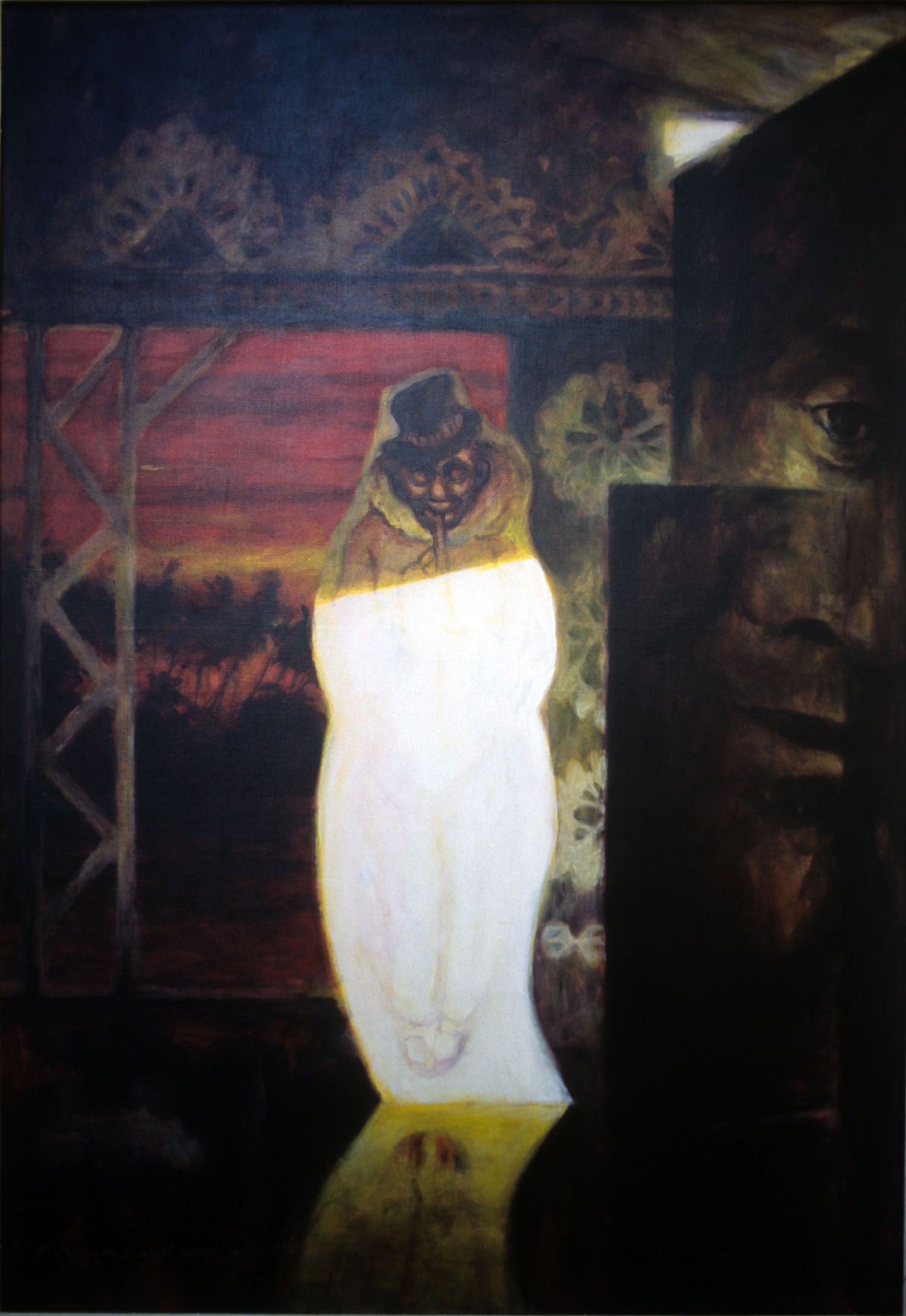
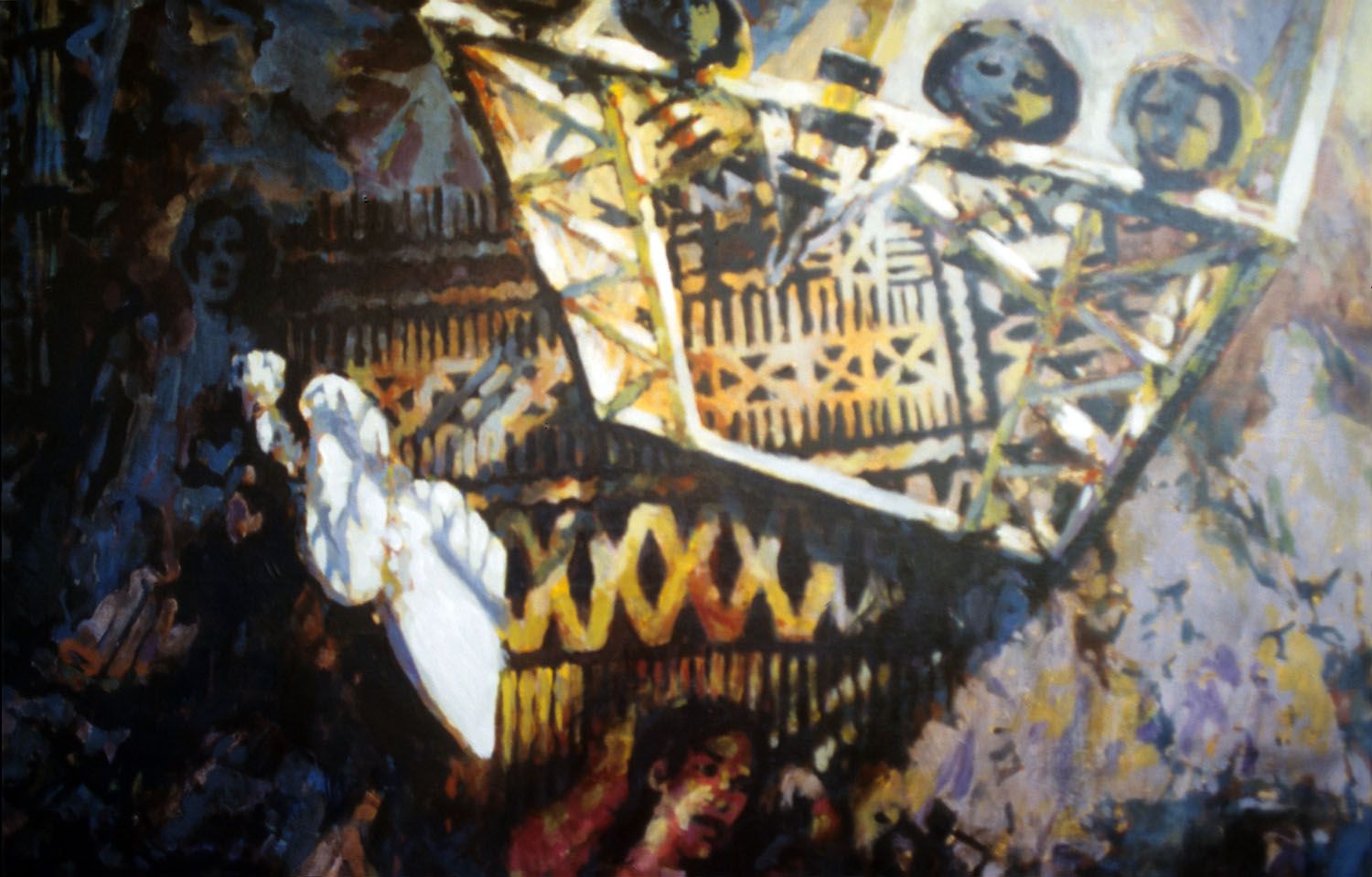
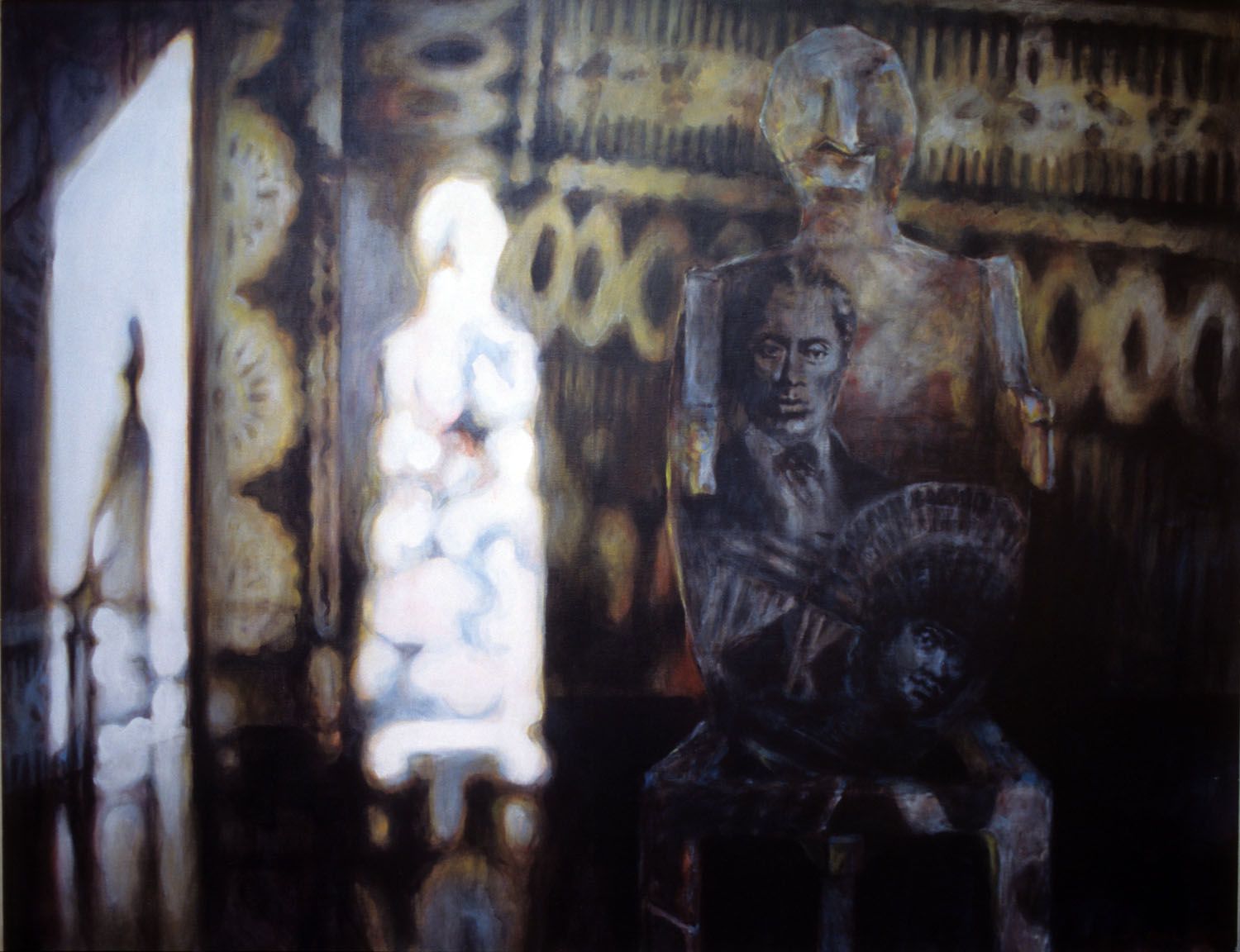
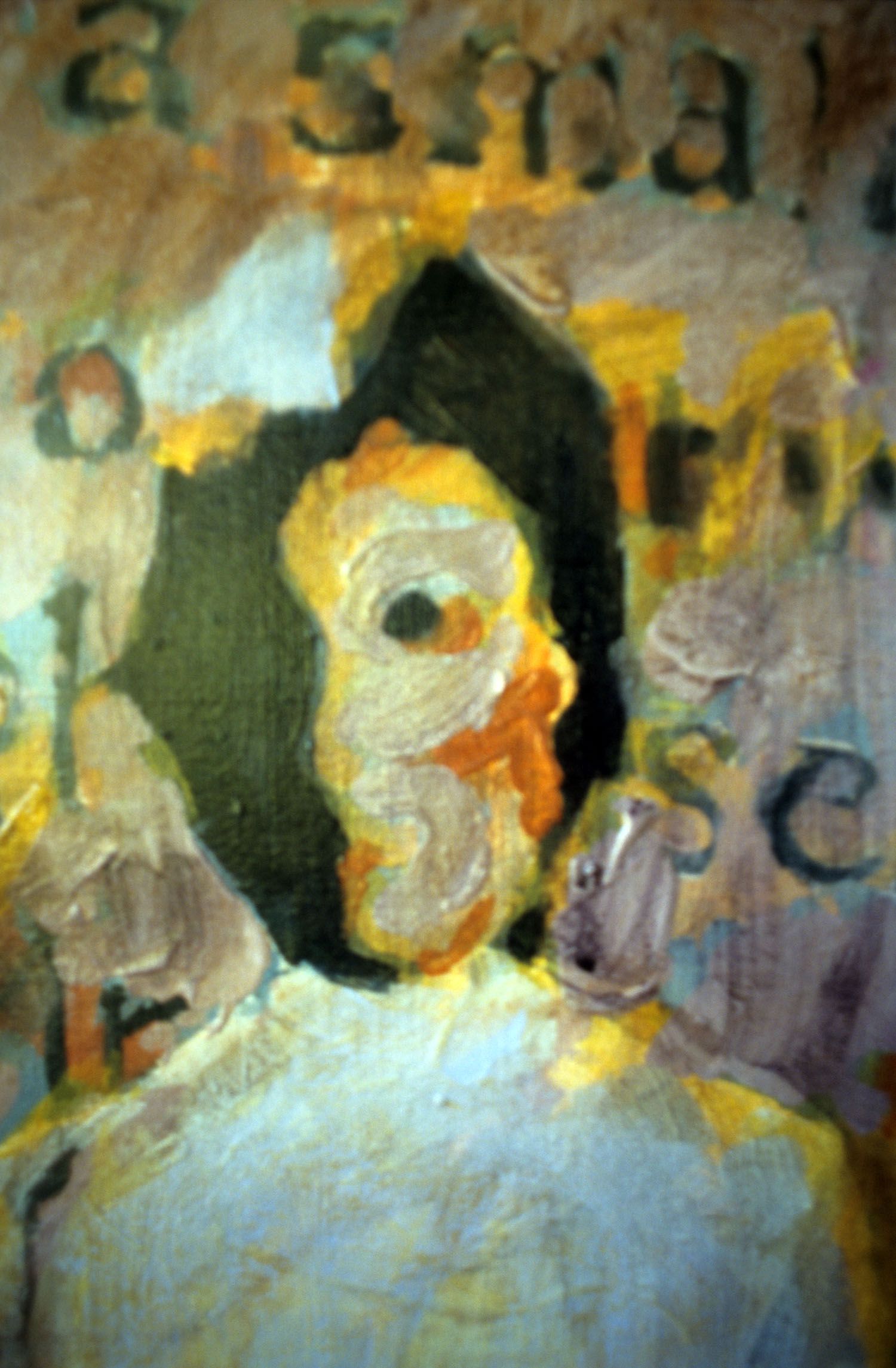
“Family Room”*
(*First showing of new acrylic works)
Lyall Burton Gallery 1995
Mike Green: Exhibition Notes
In the early 1850's four brothers from Yorkshire emigrated to Tasmania and Melbourne. They set up a provisions store where Young and Jacksons stands today. By 1856 they were broken by recession. Benjamin moved on to the United States and became a professor at Michigan University. Joshua went to the South Seas as a trader and became the first British Vice-Consul in Tonga. William sailed to Vancouver, was elected to the
House of Assembly; he became a bank manager in the Cariboo and eventually was murdered in Mexico. David remained in Tasmania and became a prominent citizen in Devonport and Launceston. My great grandfather went to Tonga.
Family Room: A beginning.
For approximately 20 years I have explored interiors, examining other people's rooms, finding resonances halfway between reality and imagination. Last year I decided to deal with my own "rooms" and came face to face with the fact that they are much harder to paint.
"There must be a moment when we see it. The future drawing towards us .diminishing with each passing day and with it, the chances of it ever delivering what we'd expected of it. And all the while, the past...... yes, the past grows with us ...... Each day it has more to offer. And we turn to it believing it will rescue us from ourselves".
Liam Davison, "The White Woman."
Both my parents came from extraordinary families. This exhibition deals with my earliest memories and the weight of family history which bore heavily on my childhood. Sitting on tapa mats spread outside on warm nights, the stories and hearsay were always there. Fragments flung as broad as the sky we sat under. The romance of missionaries and cannibals, exploration and adventure; the sub text of racism and mixed marriages, religion and government, drunkenness, family success and failure, expectations and fate - all these have created a pattern which exerts its influence.
The paintings have their beginning in the pattern of a family tree (with its brief life summaries - "made money", "1/2 Tongan", "Killed in Mexico"), traditional tapa, maps and voyages, to which are added fragments of letters, photos, childhood drawings and parts of paintings. I build family totems and structures - symbolic ancestors and move them all until a resonance evolves, creating "rooms". These rooms do not take a traditional form, they represent a room of the mind, an aggregation of many "places" - maybe simply the space between. Observers still.
"..... the house is one of the greatest powers of integration for the thoughts, memories and dreams of mankind. - Past, present and future give the house different dynamisms, which often interfere, at times opposing, at others stimulating one another."
aston Bachelard, "The Poetics of Space."
"Where would you like me to begin? The start? The end? That's the problem with the past - the choice it offers. The advantages of hindsight. Things don't unfold before your eyes. You have to give it shape."
Liam Davison, The White Woman.
"History is a 19th Century European invention. It is a marvelous way of looking at the past, but it has its limitations and that's why I have turned to fiction; to explore the nightmares, dreams and whispers of things to do with the past..... History is very European because it seeks to constantly enclose life in a system to explain everything once and for all. And you can't explain life and people once and for all."
Richard Flanagan, "Death of a River Guide".
(Interviewed by Chris Beck, The Age 14/1/1995)
MIKE GREEN
R e c o n s t r u c t i n g Memory
Liam Davison. 1996
Mike Green's recent and current work is best viewed as part of an ongoing dialogue with the past - not with one past but with a series of remembered and imagined pasts, each in a constant state of argument and flux. Private pasts, family pasts, histories, cultural traditions and past works are assembled and disassembled in these works as part of a continual process of reconstruction which moves insistently towards a sense of unity and wholeness. As such, the works are both new and part of a much older pattern which Green has been shaping over the past twenty or so years.
Green is a painter of interiors. Much of his earlier work is characterized by a strong awareness of landscape and open space, though always seen from an interior perspective. The Gypsum Palace paintings of the late 1970's mark not so much a rejection of landscape painting as a desire to view landscape from the inside. They explore the stories carried by it through rooms and spaces which are not removed from landscape but placed firmly in it. The landscape of Gypsum Palace is outback NSW - harsh, arid, glaring with a light and heat that eventually drives Green inside an abandoned and derelict house to paint. He will rarely paint outside again.
Much of the drama of the Gypsum Palace and South Australian paintings occurs on that littoral zone where shade meets light and uninhabited exteriors meet interiors which are peopled with signs of absence. Unmade beds, carefully positioned chairs, unclosed doors - all suggest narratives of lives recently lived. The two worlds of these paintings are separate but unarguably part of the same experience. Their boundaries are rarely cleanly demarcated. Searing light glares from outside into dim interiors.
It leeches through cracks and doorways to reflect off internal windows. In later works, tattered canvas awnings blow inwards, drawing the outside world in through a dynamic play of colour and light to diffuse the boundary between the two. The placement of chairs, the fall of shadows, refracted light – all work to further complicate the division. Green's interiors, even in these early works, are never static. Always, there is a sense of movement from outside to inside and of narratives recently interrupted. Always there is a sense of the presence of the past.
The landscape of Gypsum Palace informs much of Green's later work, as though it has become an internal landscape - the landscape he carries with him. It provides the base for a range of later interior studies, all of which look out to variations of this remembered place which has been shaped as much by imagination as by the physical world.
